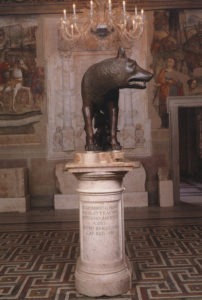
by Jean Marie Carey | 9 Apr 2018 | Animals in Art, Art History
So, now that my time at the Rifkind Center is coming to an end, I have some breaking news announcements to post in sequence…
First, beginning this Saturday and through the summer months I will … well, be involved in a series of discussions about art history sponsored through a grant I received from the Hillsborough Public Library Cooperative. It’s all kicking off at the SouthShore Regional Public Library in Ruskin.

IKR
The SouthShore Library has a great history of funding arts programs for the patrons in its off-the-track corner of the county and I am very grateful to receive this support and for being able to work around upcoming travel obligations. The library staff had in mind a formal sequence of talks, but the proposal I made is for something more experimental that I have had in mind for a while…

…which is why I hesitate to call these “lectures.” Each session is going to be very interactive and will unfold in a participant-driven way, and there will be a digital component posted for downloading during and after each event.
(more…)

by Jean Marie Carey | 12 Nov 2017 | Art History, Re-Enactments© and MashUps

Funerary shroud of Tasherytwedjahor from Roman Egypt, c. 150. Tempera on linen. Museum of Fine Arts, Boston, Nr. 54.993
Funerary imagery permeated Roman culture and riddled the visual landscape. Representations of death in the form of monuments and statuary are the best-known artifacts of Roman Imperial customs surrounding death, but these static glyphs complemented a “lively” practice of ancient Roman funerary practices in honor of the deceased and his or her family. During the city’s Caesarian and Julian centuries, roads leading into the city were lined with tombs, and to walk Roman streets meant encounters with representations of the dead on a daily basis. In Rome, the dead were ever-present.
However the civic perception was by no means entirely morbid. Rather than only mourn the death or commemorate the deceased, the Roman funerary cityscape offered opportunities for the display of familial, political, and personal symbolic capital. The accouterments of the funeral – chariots, triumphal regalia, the garb of magisterial office, and the display of past familial accomplishments – were intended to underscore the accomplishments of the deceased and demonstrable clout of aristocratic, wealthy, and politically connected citizens. In turn, the family could use funerary imagery as an internal yardstick that would present clear goals for its younger members to achieve. The dead offered exempla of past success, and reminders of one’s own place within the generational power structure of the family.
As the empire extended in all directions, Roman visual culture mixed with that of Egypt, Britain, and Byzantium, producing painted shrouds, sarcophagi, and mosaics. Some iconographic meanings are yet lost to us, such as a Roman sarcophagus depicting the Greek myth of Medea.
“[She] marries a Greek prince, a hero, goes back to Greece with him, they have two kids, but later on, her husband — a hero named Jason — has a mid-life crisis,” Dr. Mont Allen of Southern Illinois University has said. “He wants to jilt his wife, get a hot Ferrari and a hot trophy bride, and he essentially jilts Medea and her two kids there and she’s totally stranded, she’s a foreigner and here she is in Greece.”
Because Medea was a divorced woman, she had no protection in the ancient world.
“So she has her vengeance by killing her own two kids and then escaping, that’s the story of Medea,” Allen said. “What would [the sarcophagus] have cost, translated into modern dollars, $600,000? You think, ‘Why would an ancient Roman woman spend roughly $600,000 so that all her future generations of descendants could see the story of Medea on her coffin?’ Like, who on Earth would want to be remembered as a killer of children? The people looking at this are going to be your own family members.”

Roman Severan-Era Medea Sarcophagus, front view, c.190-200. Photo: University of California, San Diego
(more…)

by Jean Marie Carey | 15 Dec 2010 | Animals, Animals in Art, Art History, Dogs!

Do you love Lupa Capitolina? Then you are going to be extremely happy with the forthcoming manifesto on the Capitoline Wolf.
Today at her home at the Capitoline Museum the wolf has many admirers, visitors whose fingers itch to twirl the regular, S-shaped curls of her mane and to caress her sinewy legs, her elegant tufted paws, and her smooth, distended udders. The infinitely abundant images of the wolf on Rome-affiliated merchandise seem to increase rather than dilute the potent aura of the statue herself. What is it about the she-wolf that makes her so compelling?
Scholarship on the origin of disputed bronzes such as Lupa Capitolina (in fact the origin of a number of works including some Etruscan hand mirrors is contested) tend to focus on issues of the absolute. Are the bronzes authentically Etruscan, Roman copies, or 19th Century knockoffs? Do they come from a single workshop? Are they cast by one artist and engraved by another? Whom were these objects made for? Were they part of one group?
I take it as a good thing that, even despite the most thorough scrutiny of Lupa Capitolina imaginable, we do not have answers to any of these questions about her, nor are we likely to find them. No matter what technology can eventually answer about when she was made, Lupa will be able to keep a lot to herself, rendering her enduring mystique, even in its ubiquity, largely impenetrable. Yet this does not mean that questions cannot or should not be asked of or about the wolf; there is satisfaction, not frustration, in this type of open-endedness.
Stay tuned…

by Jean Marie Carey | 16 May 2009 | Art History, Italian Greyhounds

The Remorse of the Emperor Nero After the Murder of His Mother, John William Waterhouse, 1878
INTRODUCTION
An important distinction between Roman Emperor Nero and Chinese Emperor Kublai Khan (and his modern descendent, the William Randolph Hearst character entombed in Xanadu in Citizen Kane (1939) ), is that many of Nero’s ostentatious and ambitious construction projects – beyond and including the Golden Palace – contained spaces for the creation and display of art as well as libraries. In fact Nero’s baths offered one of the largest “public” libraries of the ancient world (Boese 2005, 102) (Staikos, K. 2000).
The purpose of this paper is to present a biography of Nero in relation to the development and subsequent destruction of First Century libraries in Rome, and to present an argument about how access to libraries and knowledge ebbs and flows, and how this access does not always correlate in predictable ways around what we normally think of as civilized and progressive behavior. Nero’s strategy – to earn the love and support of the Roman people by providing culture, food, entertainment, and the constant diversion of a capricious sociopath running the Empire – was successful; it was the senatorial class who actually despised Nero. As Christendom ascended, it adopted some of Nero’s tactics – the spectacular persecution of a minority, for one thing – while other beneficial societal institutions – the aqueducts and the libraries, for example – fell away (Kiefer, Highet, and MacInnes 2000).
(more…)






